Modern ball python keepers have the chance to choose from a kaleidoscope of color and pattern mutations, but this hasn’t always been the case.
While many of the latest and greatest mutations have taken over the market, a few of the earliest morphs to be established still catch the eye of ball python enthusiasts.
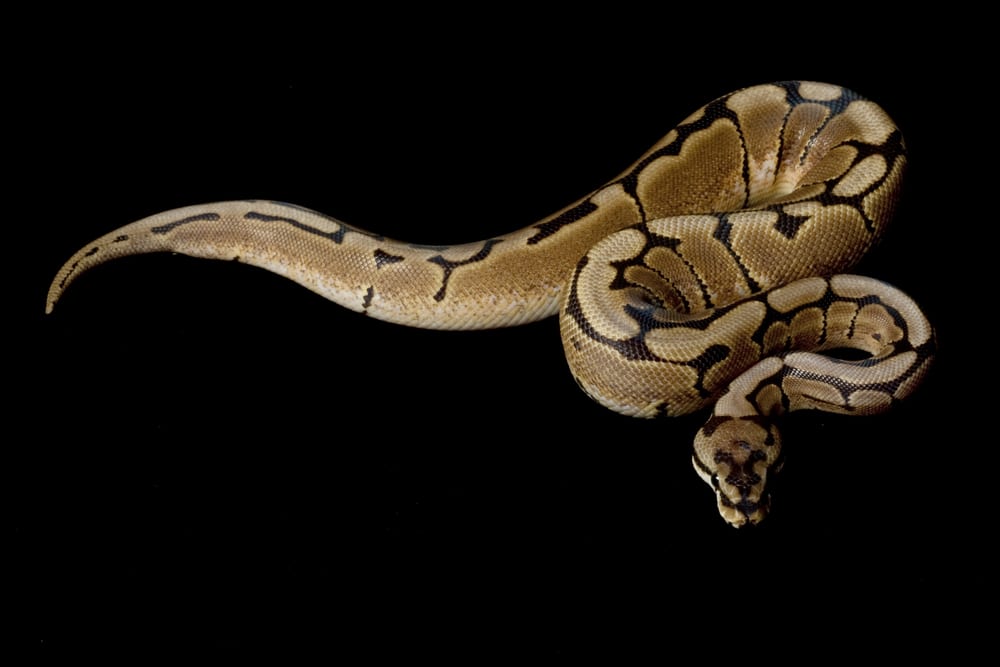
One of the best examples is the spider mutation.
An attractive ball python morph that is appealing in its own right, this mutation is also frequently used in combination projects. But there are some potential problems with this mutation, which prospective owners should consider before making a purchase.
We’ll explain everything you need to know about the spider ball python morph, so you can make an informed choice for yourself.
Quick Navigation
Spider Ball Python Morph Appearance
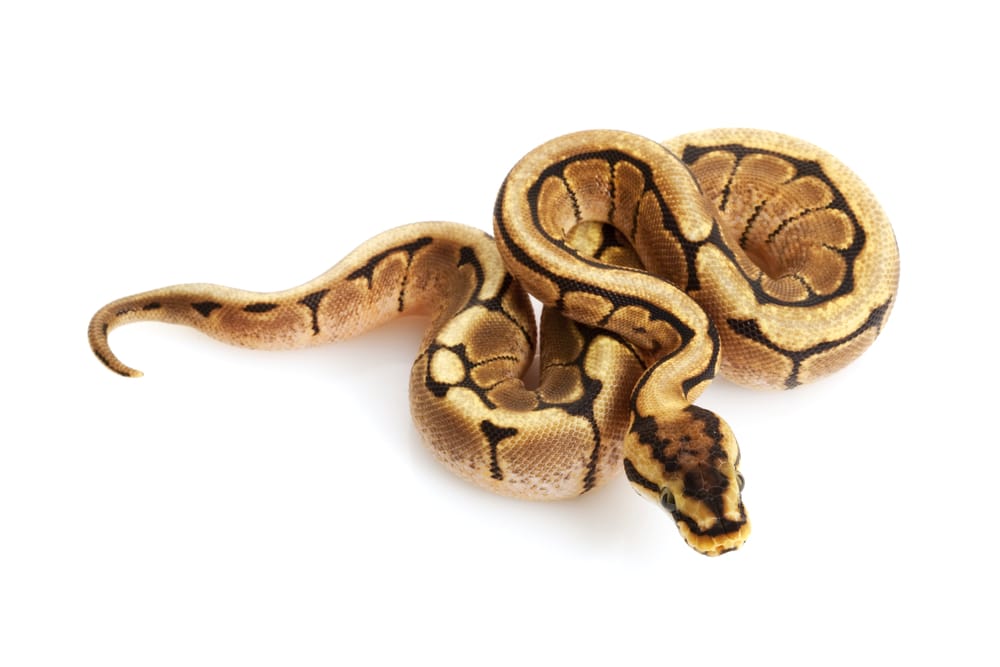
The spider mutation causes ball pythons to exhibit atypical patterns that differ from those of normal-looking, wild-type ball pythons.
However, unlike some other mutations that alter the color of a snake, spider ball pythons essentially exhibit the same colors as normal ball pythons do.
Unusual Patterns: The Primary Difference Between Normal and Spider Ball Pythons
Many think of the spider color pattern as being “reduced.”
In contrast to normal ball pythons, who have large brown to golden blotches separated by thick black or dark brown markings, spider ball pythons have much larger brown or golden pattern elements, while the black markings between them are very thin.
This gives the impression of a spider’s web, hence the mutation’s name.
Other Differences Spider Ball Pythons Exhibit
Spider ball pythons also tend to have unmarked ventral surfaces. Most spider ball pythons also have white and bright yellow markings on the lower portions of their sides. They also exhibit atypical head markings, which have more complexity and light pattern elements than typical ball pythons do.
Note that, as with most snakes exhibiting pattern mutations, spider ball pythons vary pretty significantly. Some look pretty similar to normal ball pythons, while others are very different and immediately recognizable.
Spider ball pythons also have slightly greenish irises, but this isn’t always easy to appreciate in young or small individuals.
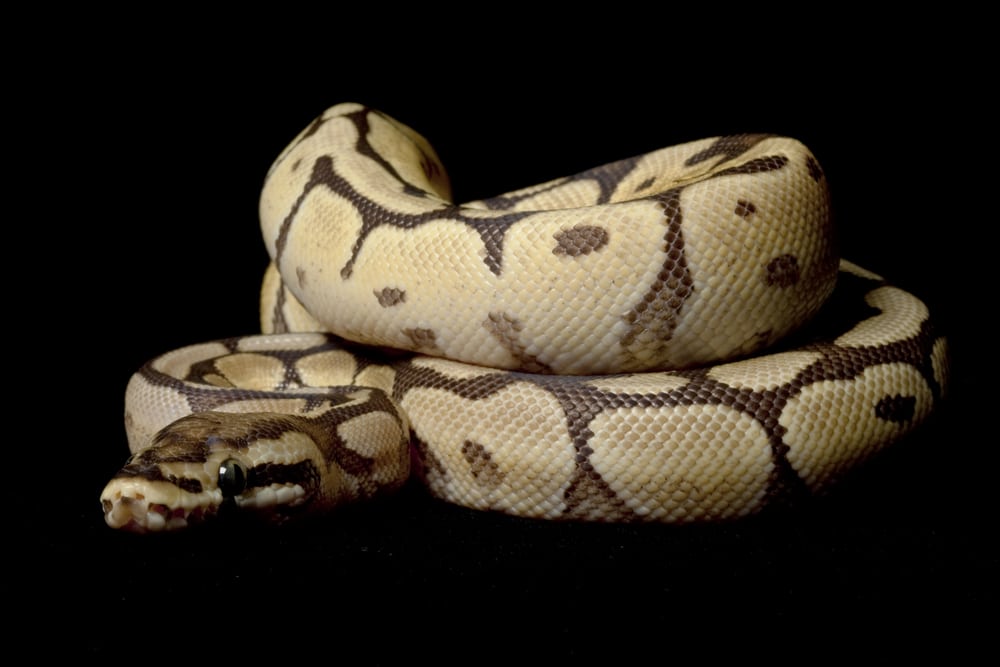
Genetics and Pattern of Inheritance
Different ball python mutations are inherited in different ways. Many of the most common mutations, such as amelanism (albino), are inherited in simple recessive fashion.
This means that snakes need to receive a copy of the mutated gene from each parent to produce the desired appearance.
But the spider morph is inherited in simple dominant fashion – at least, that appears to be the pattern.
Snakes with a dominant mutation only require one copy of the mutant gene to exhibit the associated morph.
This means that, in contrast to simple recessive mutations, you only need one spider parent to produce spider offspring.
So, if you breed a spider male to a normal female, some portion of the young will exhibit the spider trait.
But predicting the number of spider offspring that’ll appear in a given clutch is tricky, and that is the reason we don’t definitively know that the spider trait is dominant, rather than co-dominant or incomplete dominant.
In co-dominant or incomplete dominant mutations, three different possible appearances can manifest.
You can end up with:
- Normal-looking snakes
- Snakes that display the mutation
- “Super” forms, which exhibit an extreme version of the trait.
The normal-looking snakes will have no copies of the mutant gene, those displaying the typical mutation will have one copy of the gene, and those with the “super” appearance will have two copies of the mutant gene.
But here’s the problem: There is no known “super” form of the spider mutation. Spiders vary in appearance, but they all look fundamentally similar.
So, this means that the trait is either dominant – meaning that there is no “super” form – or it is a co-dominant or incomplete dominant trait in which the “super” form is lethal. It seems very likely that the trait is dominant, but we just don’t yet know for sure.
Assuming the trait is dominant, half of a spider-normal clutch will be spiders, unless the spider has two copies of the gene. In such cases, all of the young in a spider-normal clutch would appear as spiders.
Potential Problems: The Spider “Wobble”
Shortly after the spider mutation began becoming established in captivity, some keepers began noticing that these snakes exhibited some troubling symptoms.
The snakes did not appear as coordinated as normal ball pythons, and their heads would move in bizarre and unusual ways.
This phenomenon was dubbed the “spider wobble.”
The condition appears to affect all spider ball pythons, but it does vary in terms of severity. Some snakes only exhibit very subtle signs of the condition, which may even go unnoticed by inexperienced keepers. But others may be so seriously affected by the condition that they’re unable to crawl properly or eat.
The condition may vary in severity among siblings in a single clutch. It may also be severe in parents and subtle in their offspring, or vice versa. It may also vary in severity over the course of the snake’s life.
Similar problems have been observed in some other mutations, including woma ball pythons, champagne ball pythons, and jaguar carpet pythons.
Unfortunately, there doesn’t seem to be any way to correct this problem.
Accordingly, some have begun to discourage breeders from producing these snakes, thinking it is cruel to deliberately produce handicapped animals. The International Herpetological Society has even banned the mutation from its expos.
It is important to note that some other keepers and breeders continue to work with this mutation. They feel that because most spider ball pythons can still live long lives, there is no reason to shun these snakes or the breeders who work with them.
Popular Spider Ball Python Combinations
Because the spider mutation is passed on in some type of dominant fashion and it affects a snake’s pattern, it has long been a favorite of breeders seeking to create combination morphs. Some of the most noteworthy combinations the spider mutation has been used in include:
- Albino x Spider
- Bumblebee (Pastel x Spider)
- Killer Bee (Super Pastel x Spider)
- Spinner (Pinstripe x Spider)
- Spider x Caramel
- Spider x Banana
- Spider x Clown
- Spider x Mojave
- Spider x Axanthic
- Spider x Yellowbelly
- Honeybee (Spider x Ghost)
Some breeders have even produced three-way crosses involving the spider gene, such as:
- Albino x Ghost x Spider
- Spinner Blast (Spider x Pastel x Pinstripe)
- Black Pastel x Spider x Pastel
- Orange Dream Spinner (Orange Dream x Pinstripe x Spider)
- Spinner Blast (Pinstripe x Super Pastel x Spider)
These are only a few of the most common combinations featuring the spider mutation, but the possibilities are only limited by the creativity of breeders.
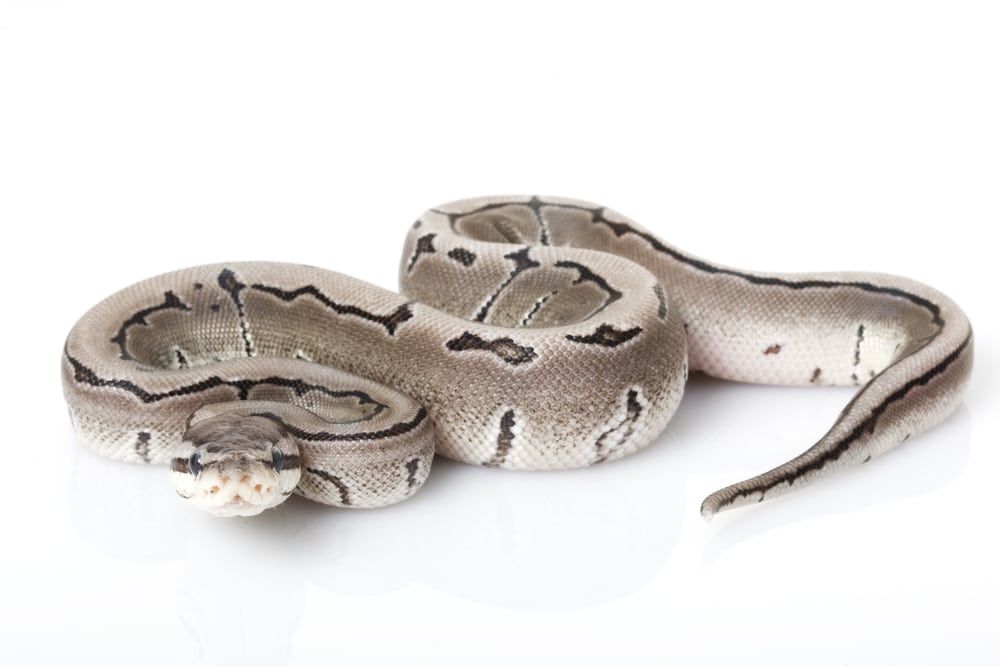
Caring for a Spider Ball Python
In most ways, caring for a spider ball python is no different than caring for a normal ball python. They have similar space, humidity and temperature requirements, and they should be fed similar diets.
But the wobbling condition they present may influence their care regimens.
For example, some spider ball pythons have difficulty striking or constricting prey items. So, you should avoid feeding them live prey. This will not only ensure that the prey animal won’t suffer due to the snake’s inability to strike and constrict appropriately, but it will also ensure your snake won’t be injured by the mouse or rat.
Instead, you’ll want to feed your snake frozen-thawed rodents of the appropriate size. You may need to be patient when offering food, as your snake may miss while striking or fail to wrap the rodent correctly. It may be especially helpful to present spider ball pythons with warm rodents, as this can provide them with more information to direct their strikes.
The only other major difference between caring for a normal ball python and one exhibiting the spider gene relates to handling. Because these snakes lack the coordination of normal ball pythons, and they occasionally move in unpredictable ways, it is imperative that you exercise care when holding one of these pythons.
So, be sure that you only hold your snake in calm circumstances. It is also a good idea to hold them over the top of a table or counter. This will help prevent them from falling all the way to the floor if you should accidentally drop them.
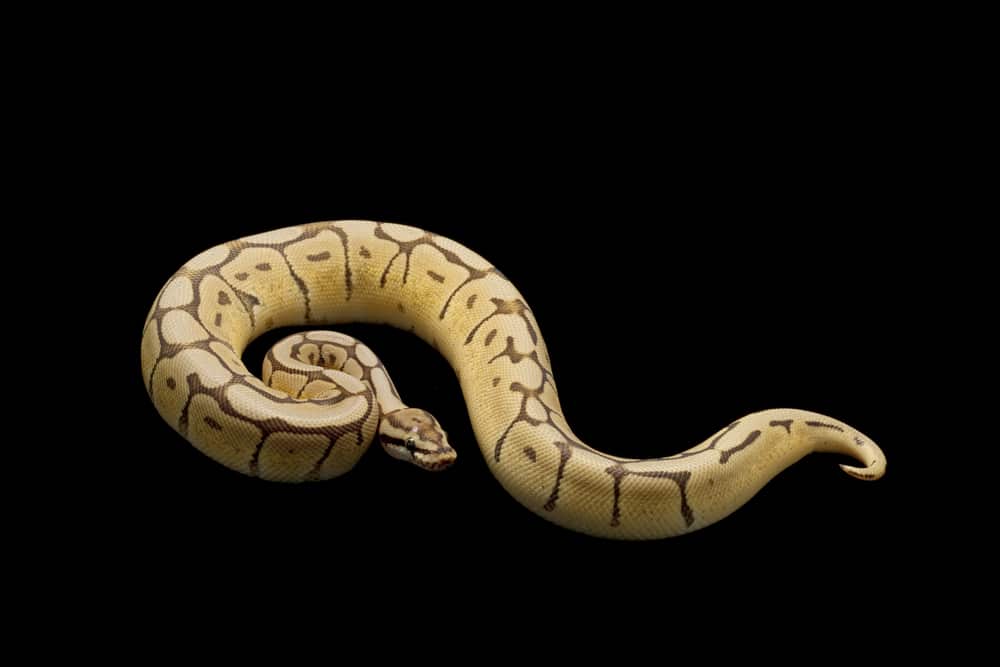
Conclusion
It’s unfortunate that this morph appears to cause ball pythons to suffer some health problems, but this isn’t completely unexpected: Many other genetic mutations cause health problems too.
Just be sure to think through the issue carefully and, if you have the chance, handle a spider ball python with your own hands before deciding to purchase one. You may come to the conclusion that you don’t mind the “wobble” and still want to work with the mutation, or you may decide to focus on some other mutation.
That shouldn’t be a problem – there are tons to choose from!
Have you ever kept spider ball pythons before? What did you think of the “wobble”? Do you think breeders should continue to produce this morph? Let us know your thoughts in the comments below!